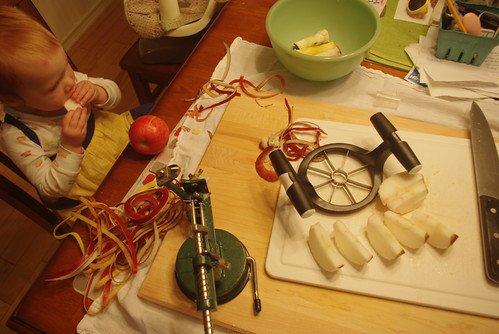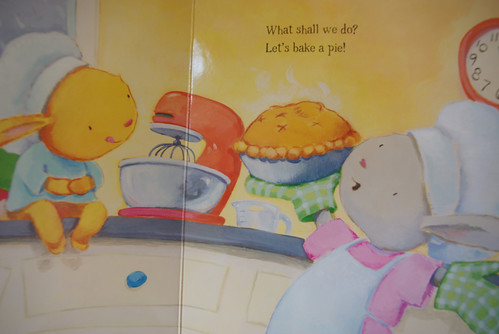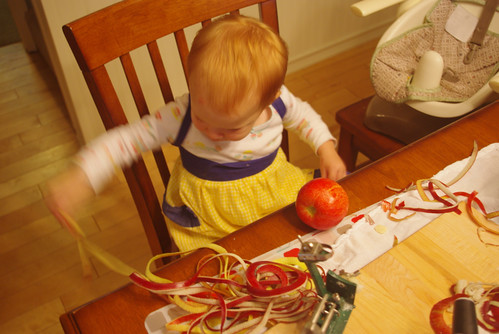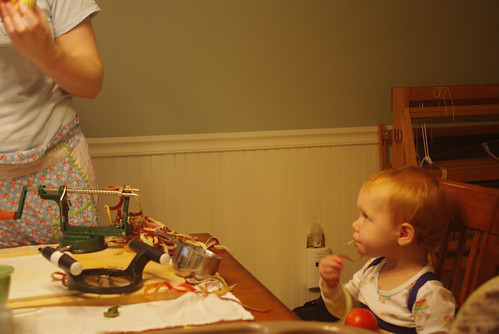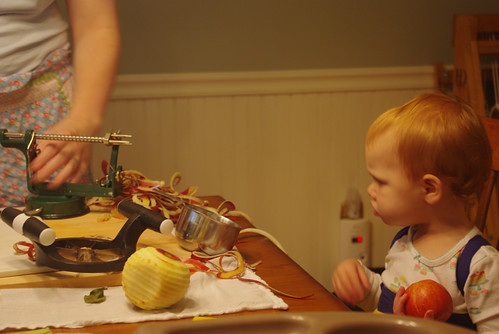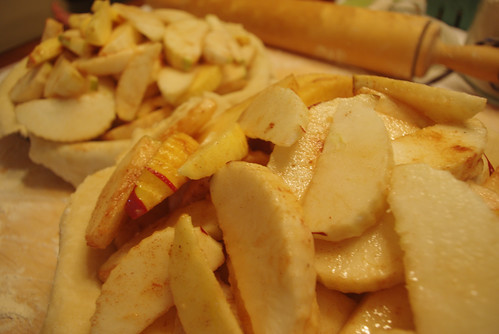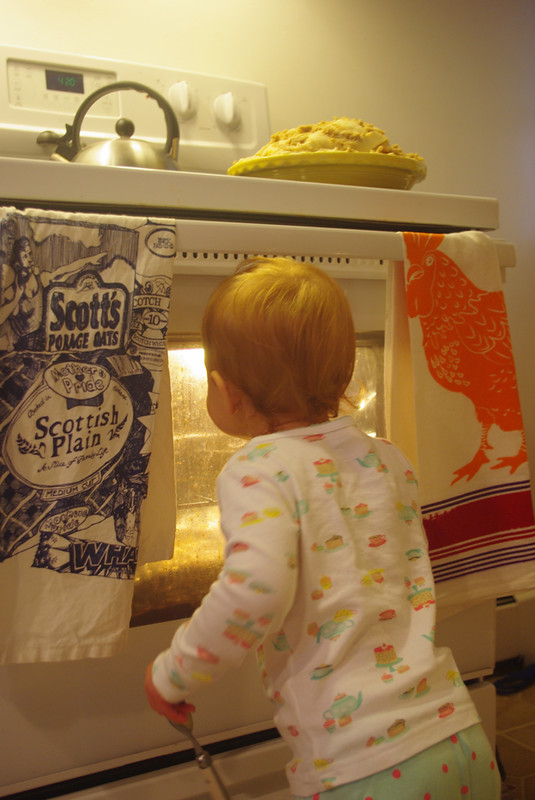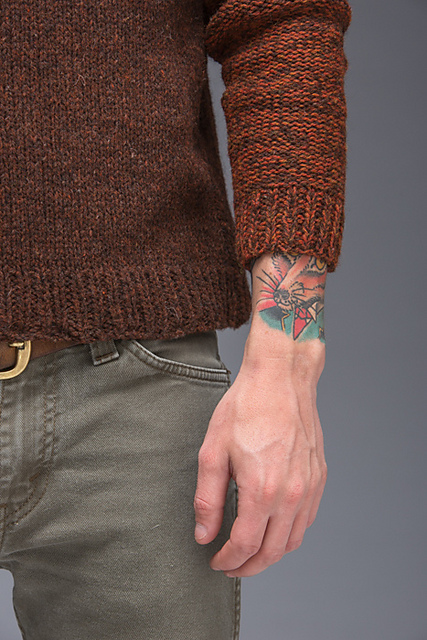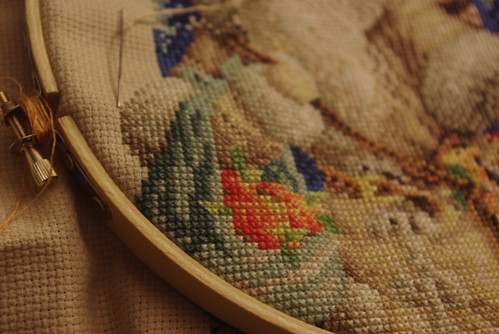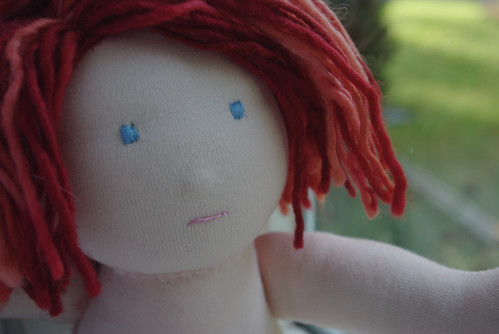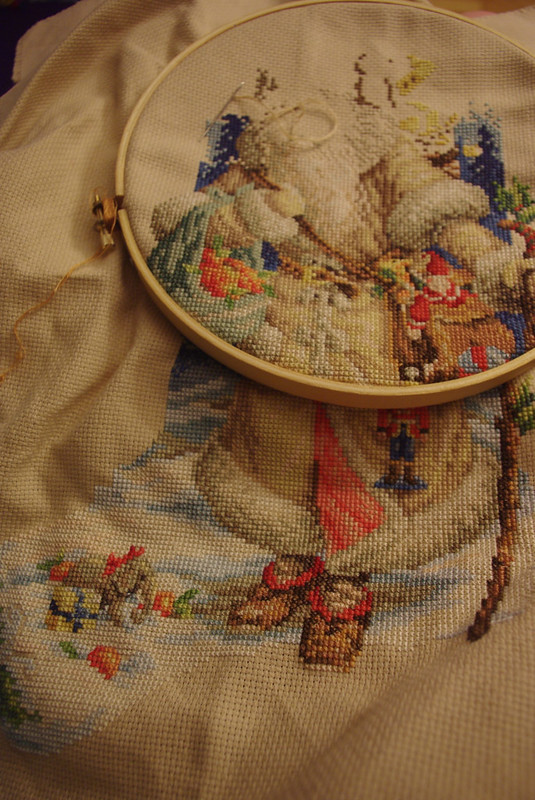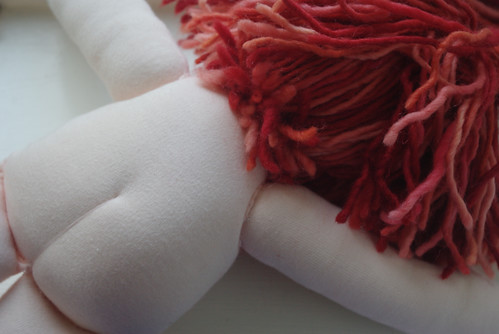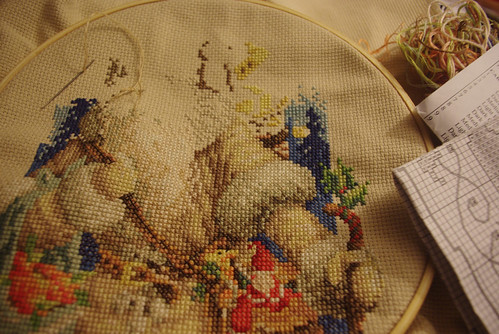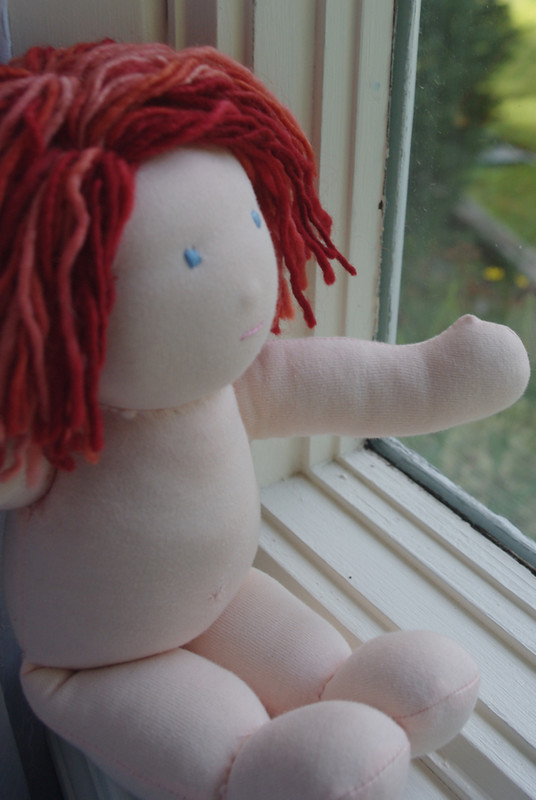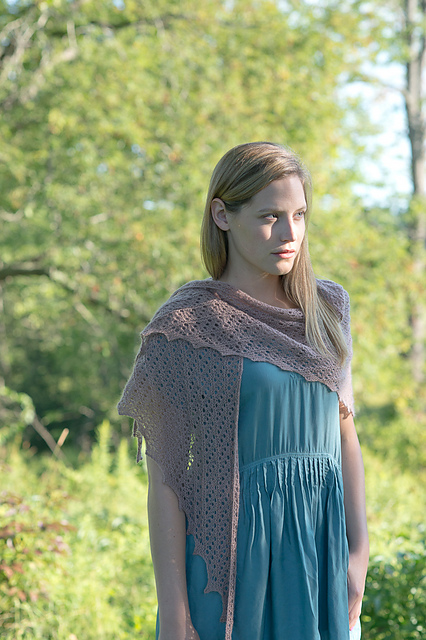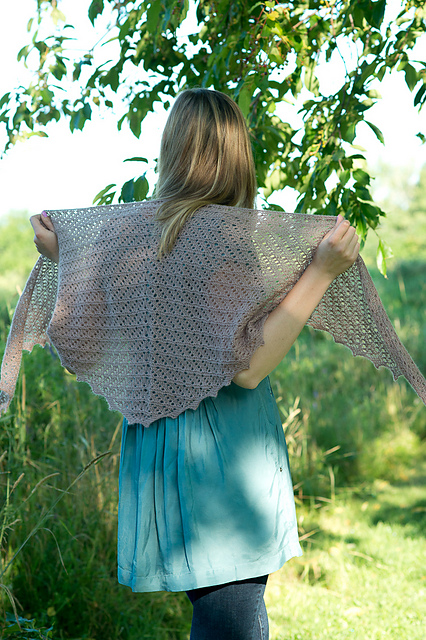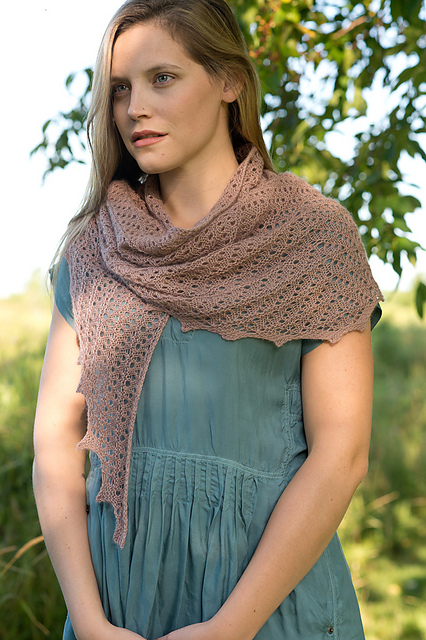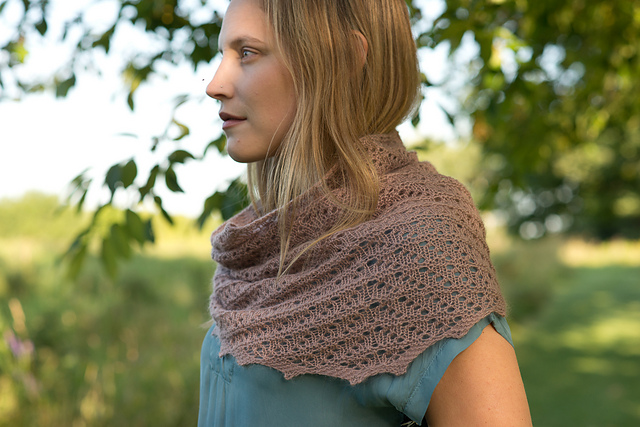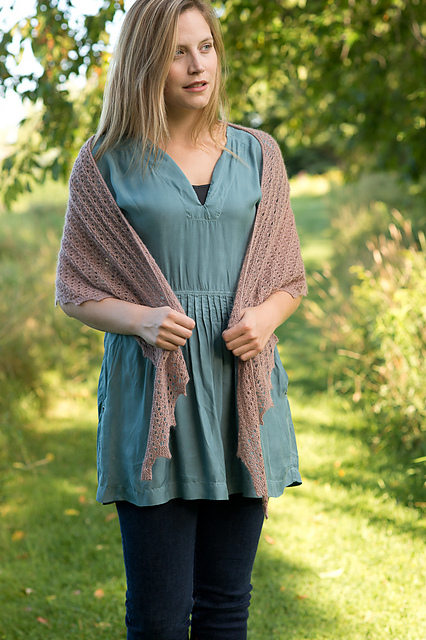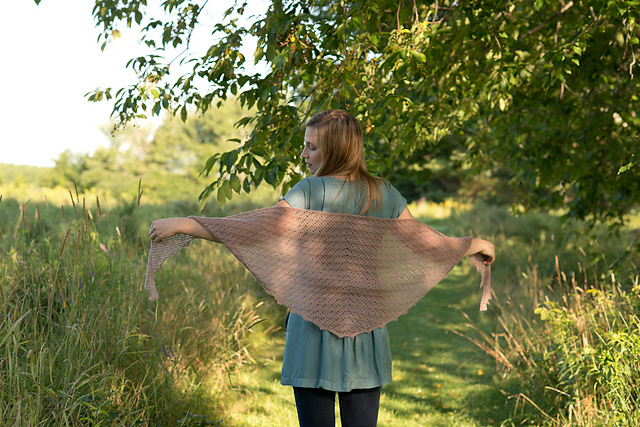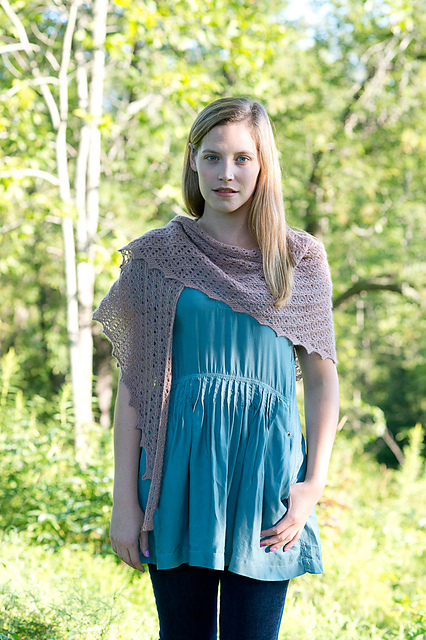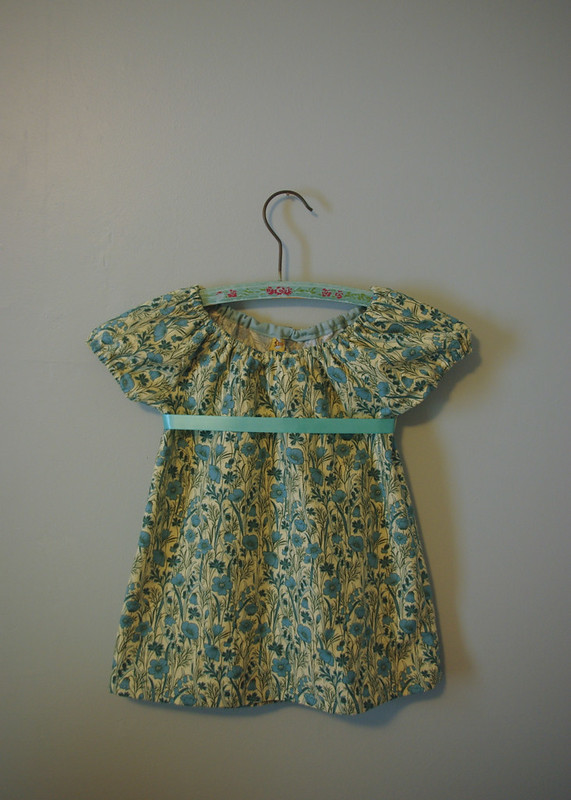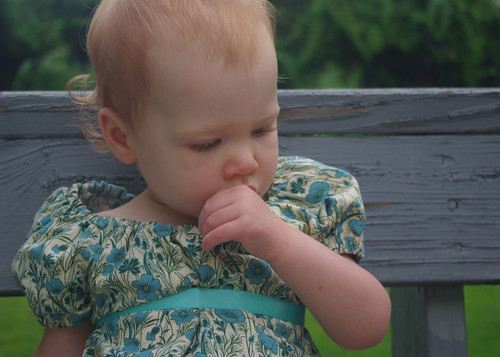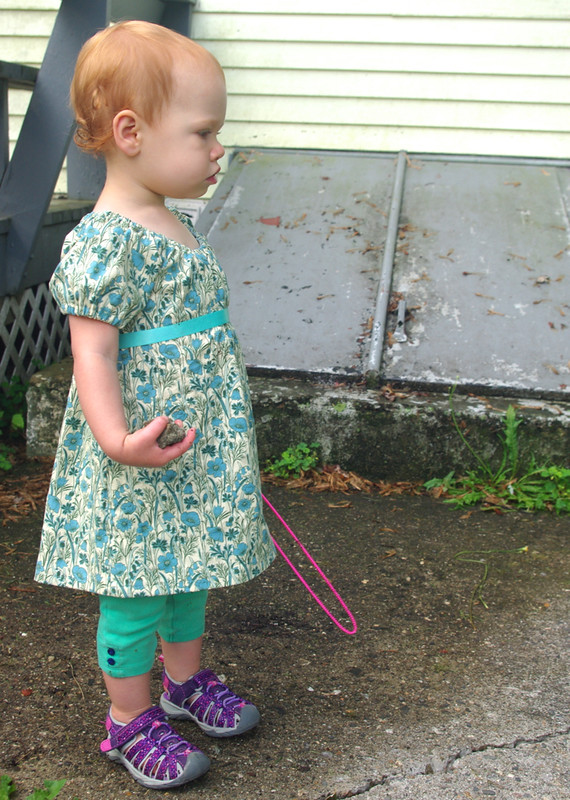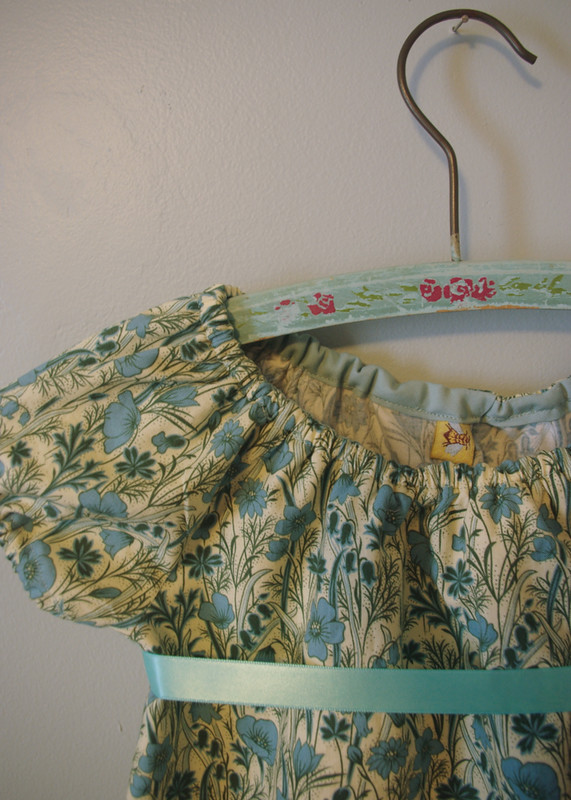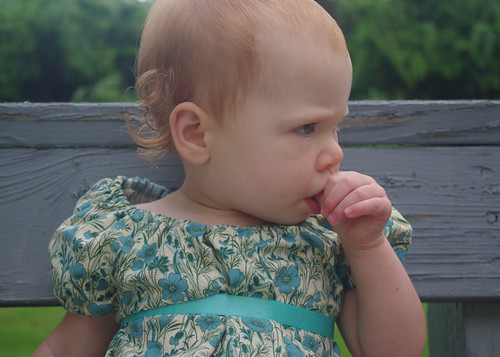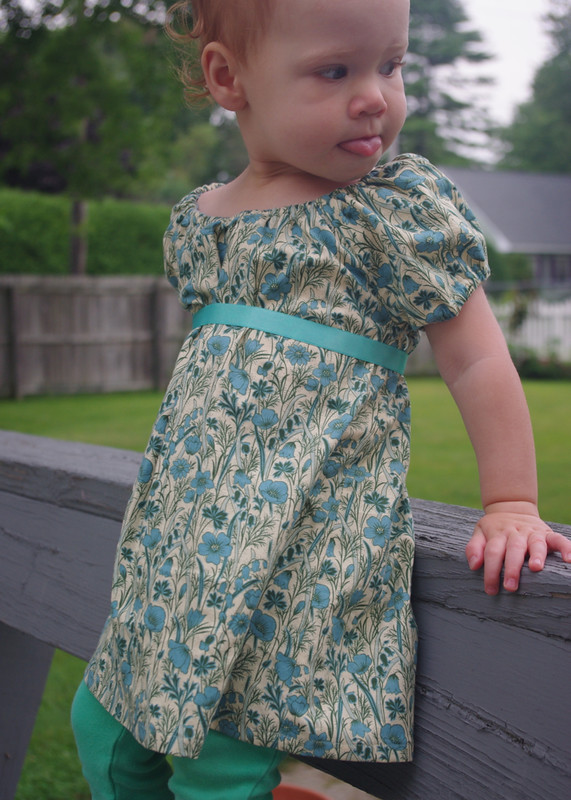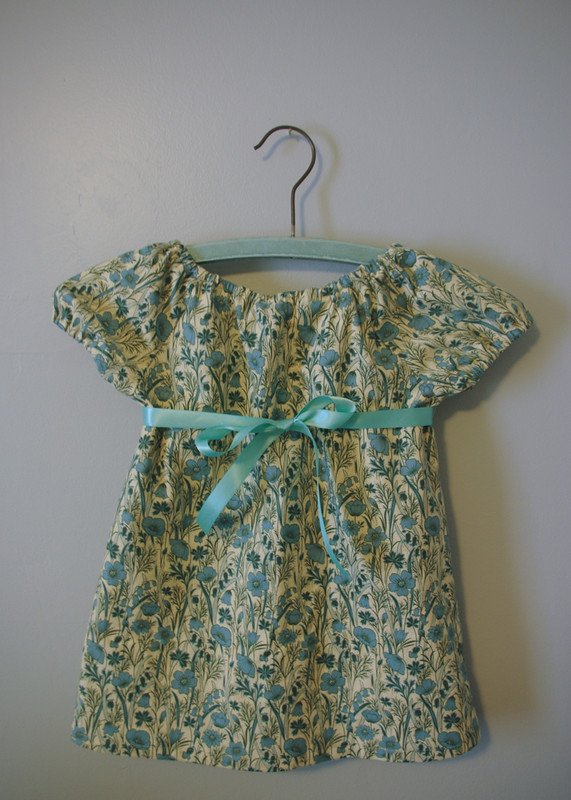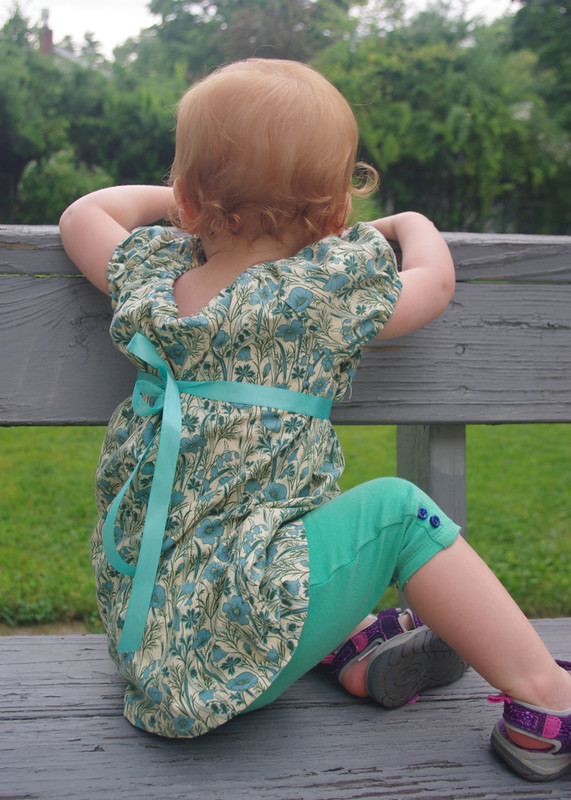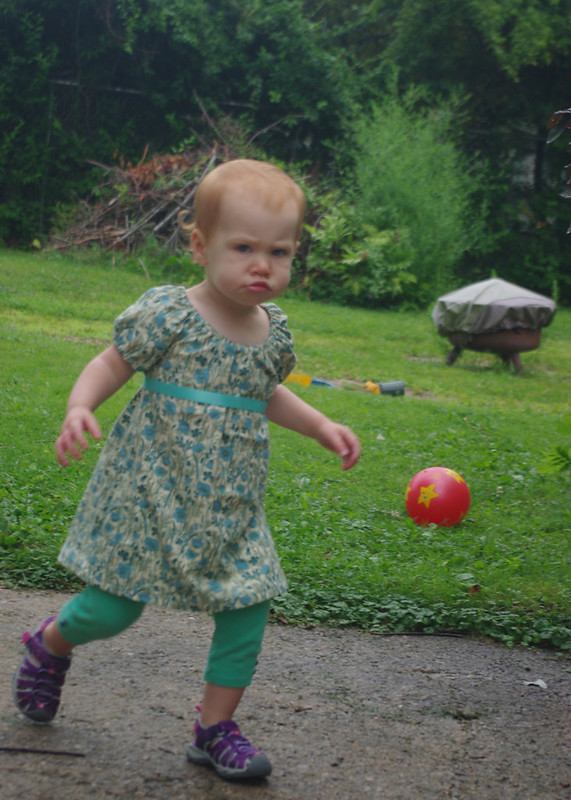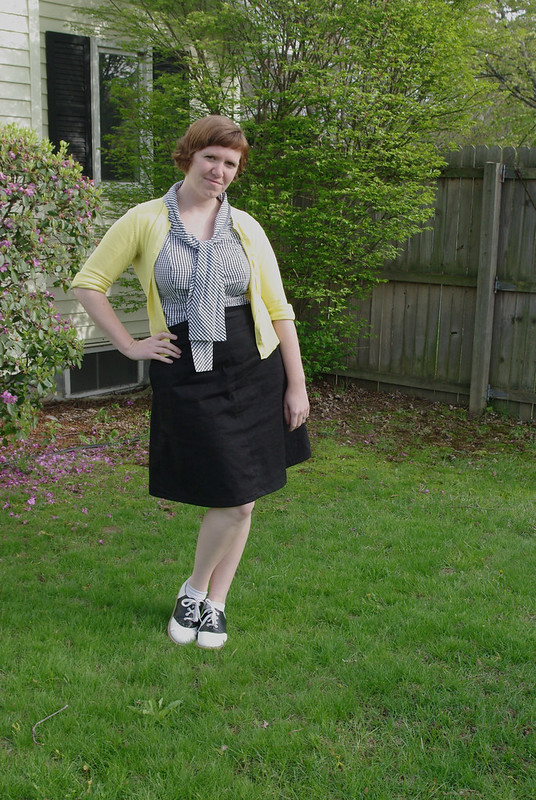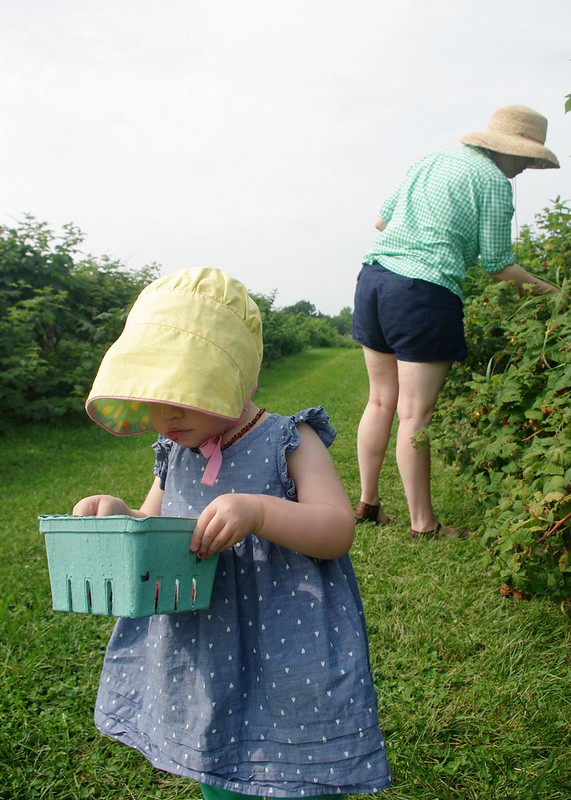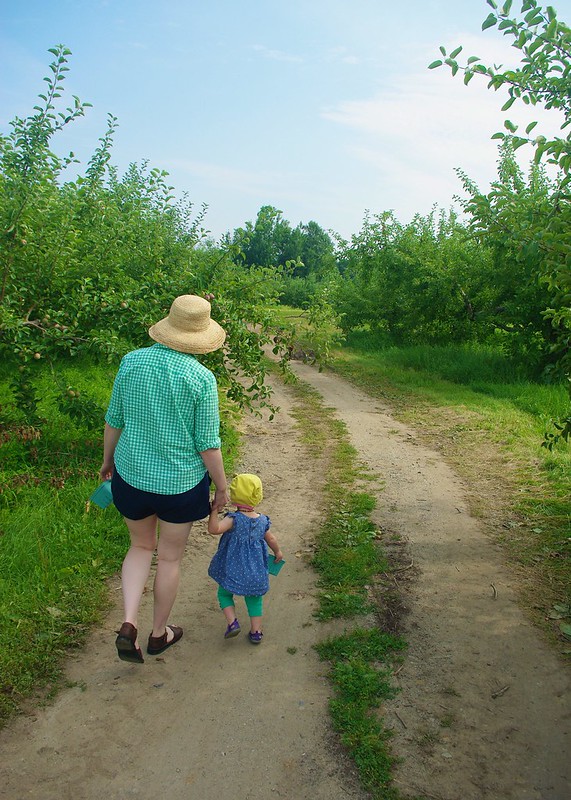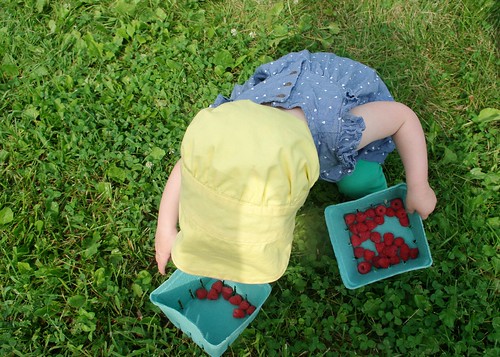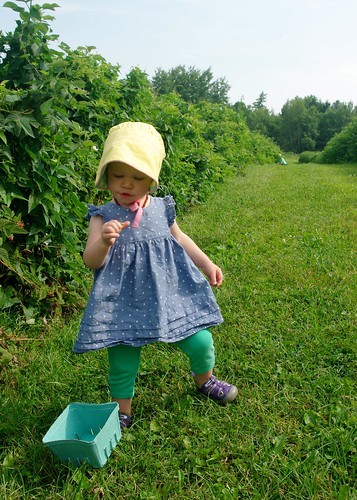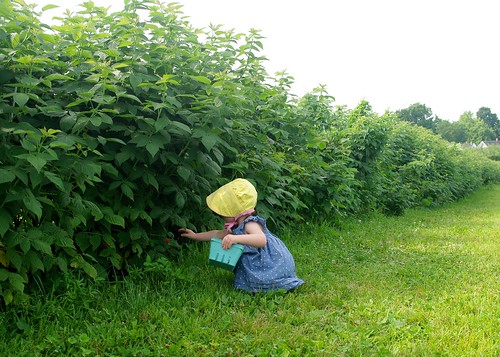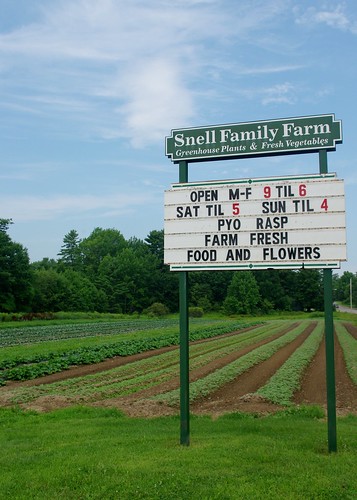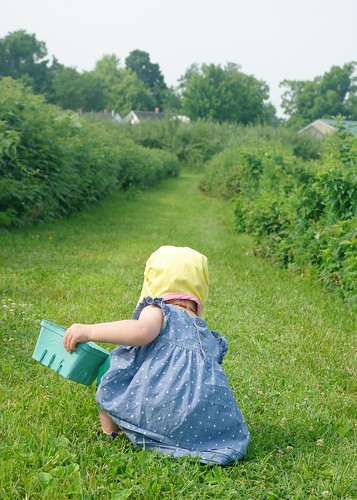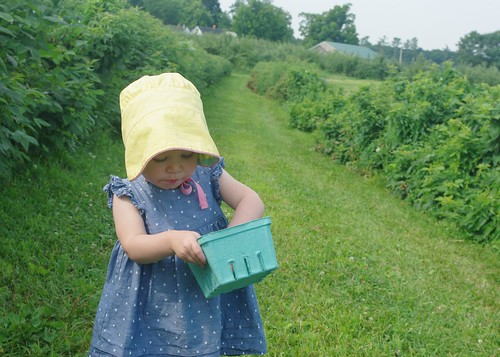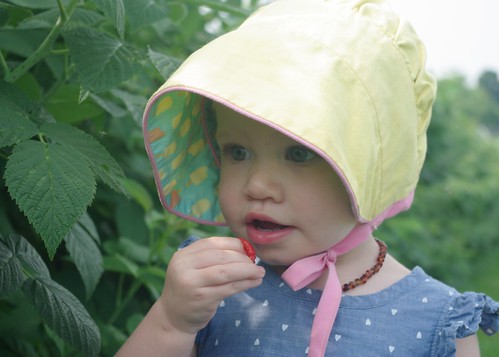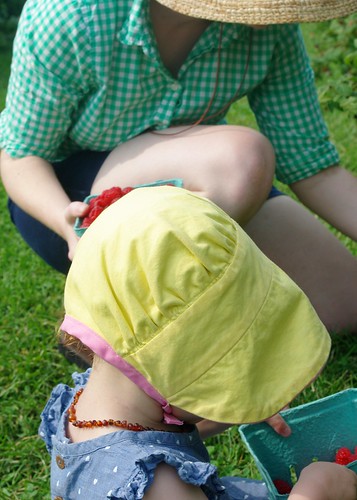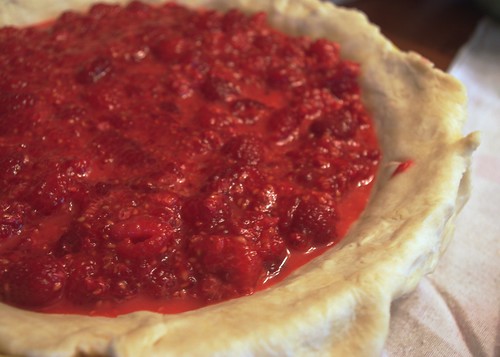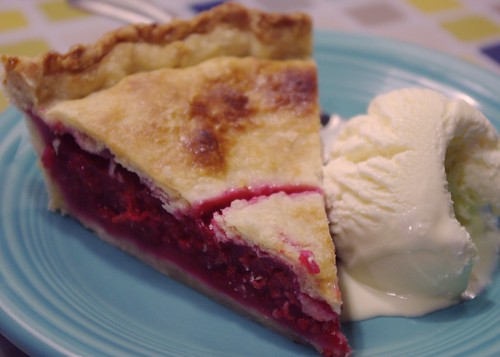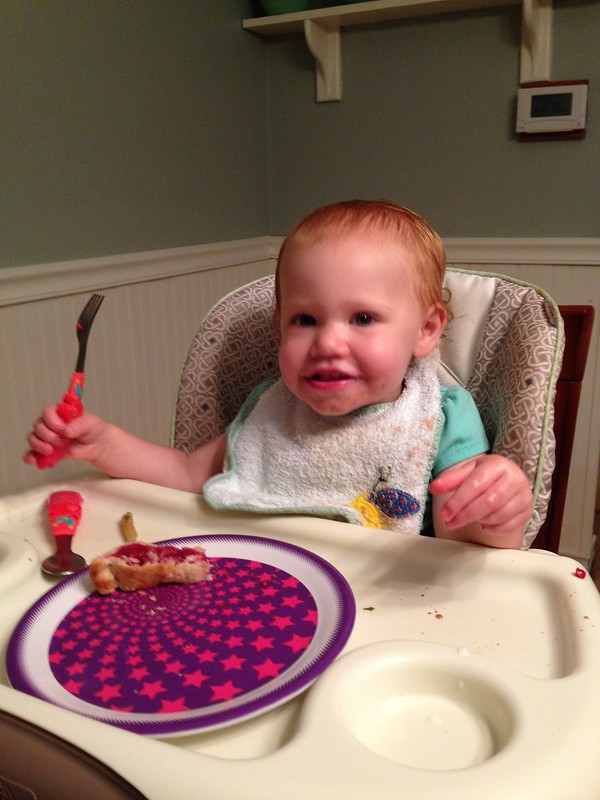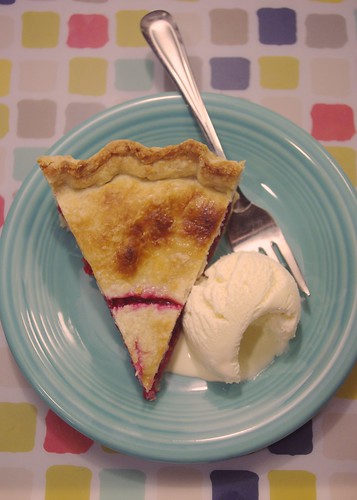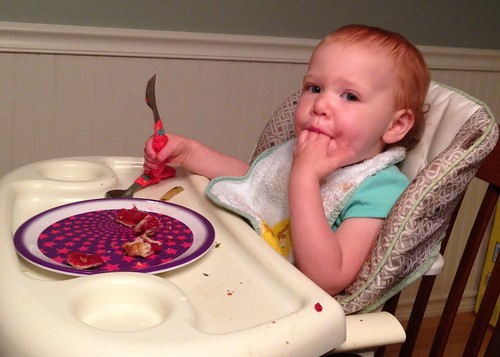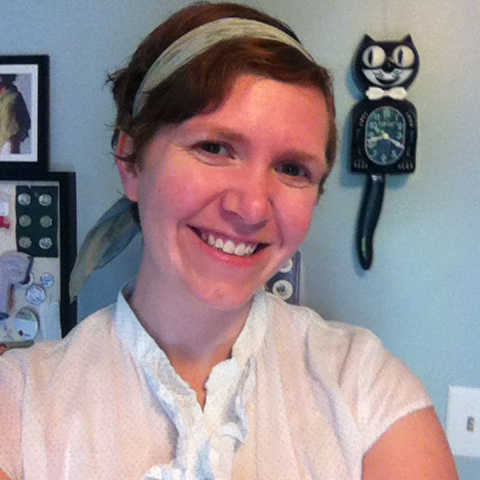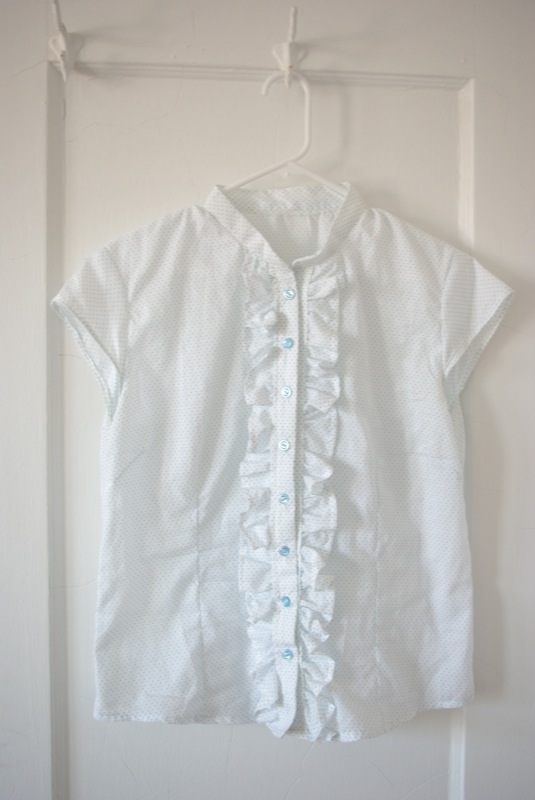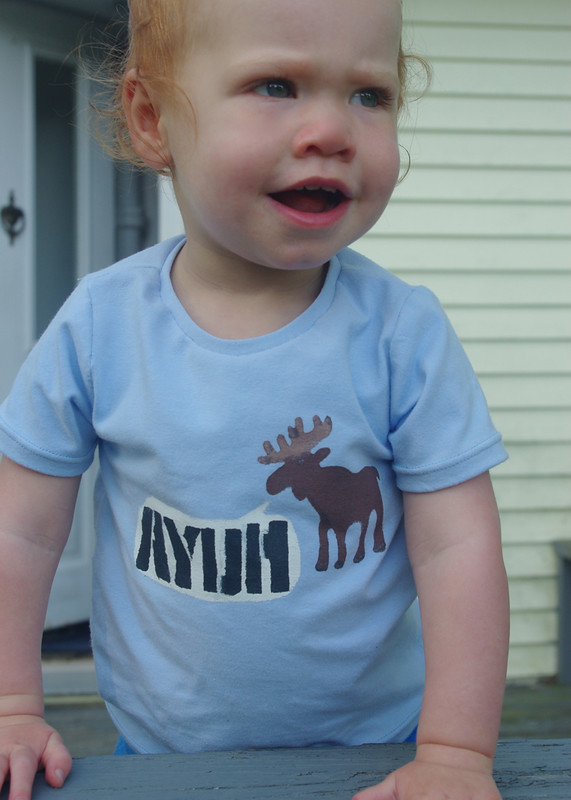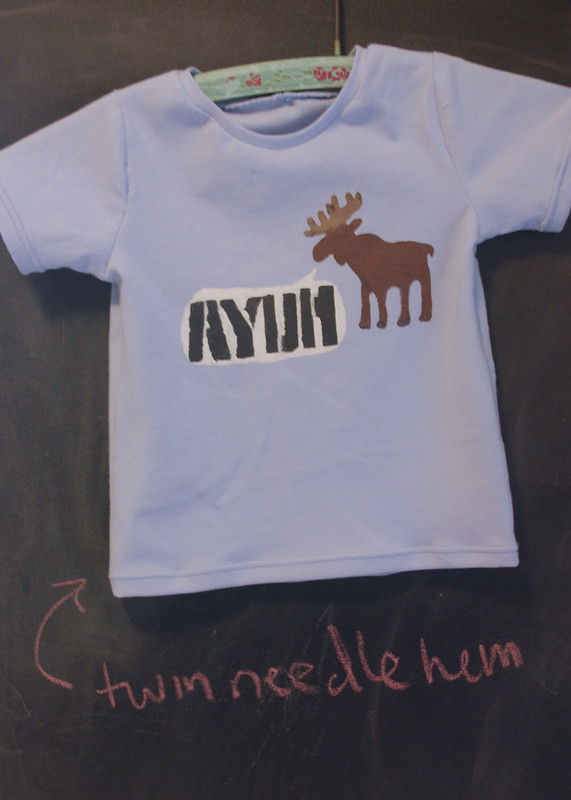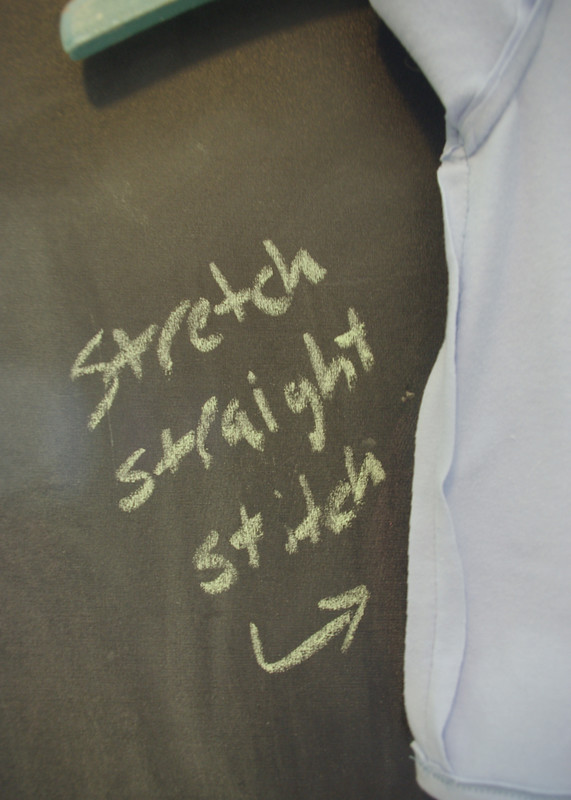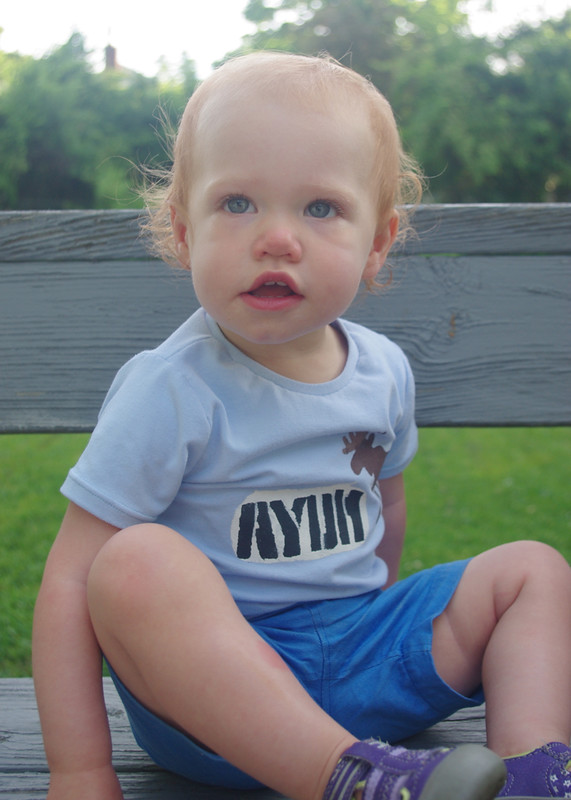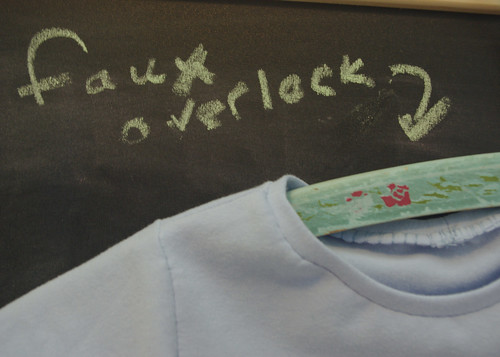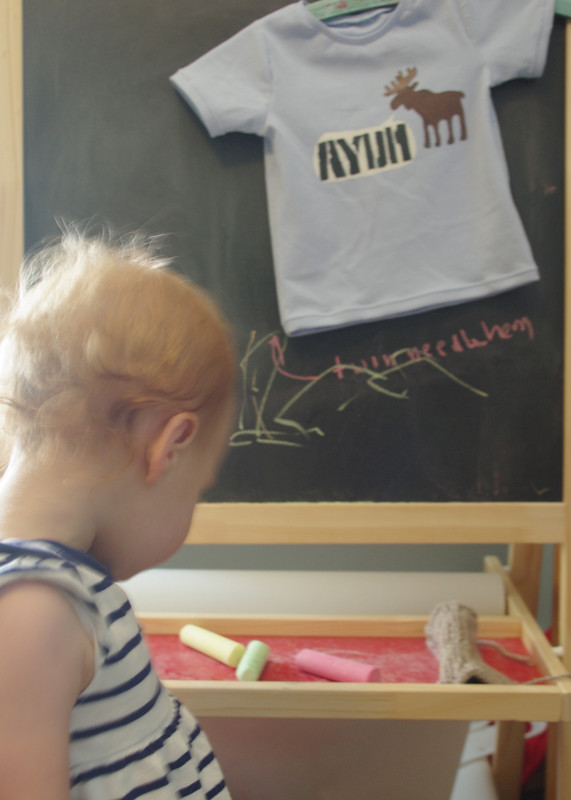What can I say? I love pick your own (PYO) farm adventures!
Last week at the farmer's market we discovered that Snell Family Farm did PYO raspberries (they do apples too). So on a sunny Saturday morning Mr. Cleaver, LMC and I loaded up the wagon (no pets allowed, unfortunately) and took the short drive out to Buxton/Bar Mills.
We had a fabulous picking experience. The raspberry fields are orderly and the picking rows are wide, so you don't have to worry about backing into thorns/stepping on fruit. There were plenty of ripe berries on the bushes, mostly down low, which meant that LMC could pick berries on her own (though she doesn't quite get the concept of ripe/not ripe yet).
I highly recommend bringing a picking assistant- twice the picking, half the fruit! I'm pretty sure LMC ate at least 1/2 pint of raspberries while we were picking, but as the kind cashier said, "I didn't weight her when she came in, I'm not weighing her on the way out." (We gave them some extra cash anyhow). We were also able to pick up some carrots and green beans from the farm stand and they have huge greenhouses full of flowers. So if you're in the mood for picking fruit, I'd highly recommend our Snell experience.
Also, can I say that Mr. Cleaver did an awesome job as field-trip photographer? With the exception of the pie close-ups, he took all of these. And he says he doesn't know how to use my camera- ha!
We ended up with two full quarts of berries, half of which we're in the process of eating fresh and the other half made their way into a raspberry pie. While LMC has assisted in the baking portion before, this was her first slice of pie, of which she left no crumb uneaten, so I think I'm safe to say she liked it.
LMC-Approved Raspberry Pie
Preheat oven to 375 °F
Crust
- 2 cups flour, plus more for rolling surface/rolling pin
- 1 tsp salt
- 2/3 cup shortening
- 1/4 cup very cold water
- Small amount of milk
- Small amount of sugar
Mix together flour and salt then “cut in” shortening with a pastry cutter or knives.
Add up to 1/4 cup of very cold water a few Tablespoons at a time, until dough holds together. Form into two equal-sized balls of dough and wrap in plastic wrap. Chill in the refrigerator (at least while you make the filling, preferably at least an hour). Flour working surface and roll out crusts, using half the dough for each. Makes one top and one bottom crust for a 9″ pie tin.
Filling
- 4 cups fresh (or thawed frozen) raspberries
- 3 Tbl cornstarch
- 2/3 - 3/4 cup of sugar (to taste, based on the sweetness of your fruit)
Mix filling ingredients together, trying not to smush the berries too much.
Place lower crust into a 9-inch pie pan and pour in filling. Use a small amount of milk or water around the edge of the lower crust to help seal. Cut vents in top crust and place over filling, cut off overhanging crust (save them for cinnaminninies!) and crimp the edges to the lower crust to seal. Brush top crust with milk and sprinkle with a light dusting of cane sugar.
Place in center of oven and bake for approximately 55 minutes, or until filling bubbles and crust is golden brown. If needed, cover the edges of the crust with tinfoil during the final stages of baking to prevent scorching.
Cool on the windowsill of your choice (nothing burns like hot fruit!) and enjoy with ice cream.




